Gravity Rush 2 Review
A worthwhile gravity-defying sequel that should satisfy fans
Gravity Rush was one of the more memorable PlayStation Vita exclusives for me. It introduced likable heroes, a unique game world, some Vita-specific control inputs and original high-flying gravity-defying gameplay. As a new IP, it carried a lot of promise, and though not every aspect was a success, it was easy to see the potential. Though because the game was only released on the Vita, some fans were concerned about the future – thankfully, those concerns were put to rest when Sony announced plans to port the original game to the PS4, and create a sequel. Gravity Rush 2 marks the return of gravity shifting hero Kat and some of her crew, as they face off against new dangers and explore new worlds. The sequel is successful at offering improvements in some areas while keeping the core experience familiar, but not without some turbulence along the way. It’s also a bit disappointing for any Vita-only fans that the sequel won’t be coming to the platform where the franchise started.
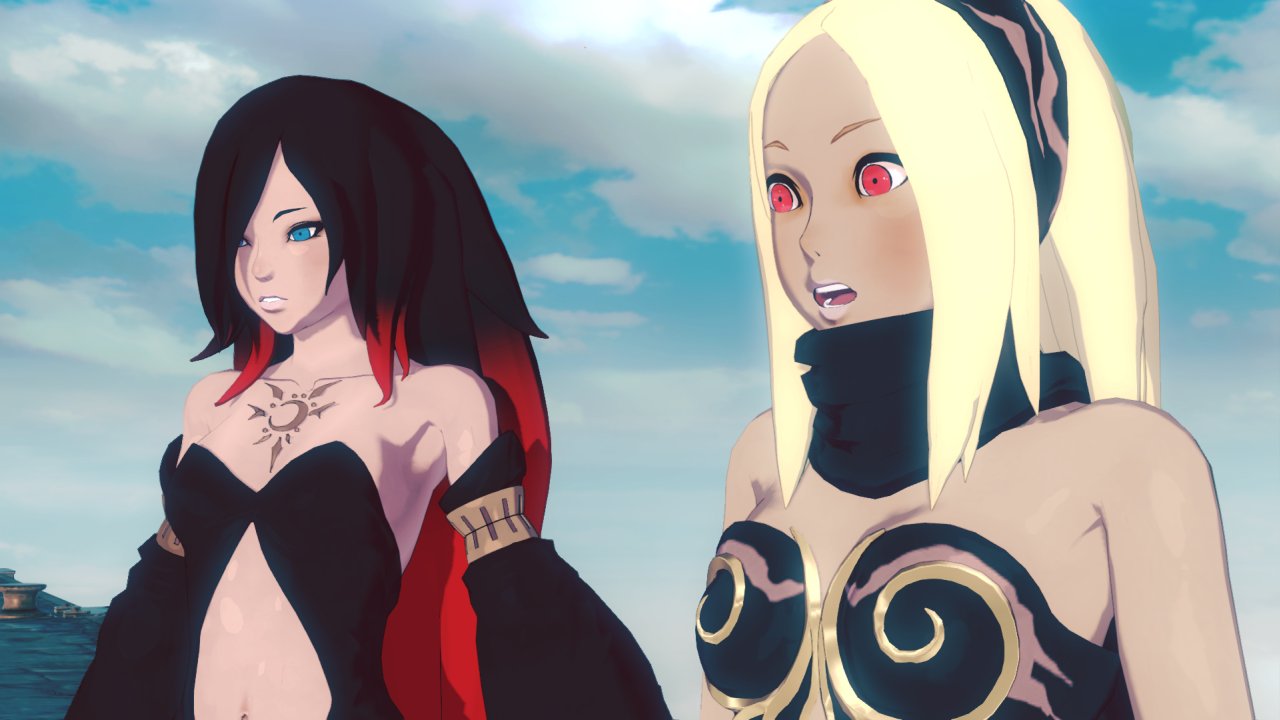
The story once again follows a young heroine named Kat. It has been a few years since the events of the first game, with Kat spending time working on a mining ship of sorts. The leader of the ship, Lisa, has rescued her along with friend Syd, after a big gravity storm hit the floating city of Hekseville from the first game and carried them away. Though Kat has been separated from her cat Dusty, which allows her to use mysterious powers to shift gravity, they are soon reunited at the start of the game and Kat is once again able to freely traverse around the floating structures. The mining ship later arrives in Jirga Para Lhao, a large floating city, where social issues are rampant, and it’s not long until Kat is unwillingly involved in a class struggle. Of course, the mysterious Nevi creatures also enter the scene to wreak havoc on the land and its people. Kat is later reunited with Raven, another gravity shifter from the first game, just in time for the situation to get worse.
Much as the original game ended on a bit of a cliffhanger, this followup is unable to produce a smooth transition – there is a YouTube anime video that summarizes the events that occur between the two games, which is good but it should have been included in the sequel directly. Rather than having a definitive central plot or antagonist, Gravity Rush 2 feels more like a series of adventures that escalate in their importance and scale, while remaining engrossing. Not unlike the original game, players will learn more about the new city and its inhabitants, battle some new human, mechanical, and Nevi foes, and hopefully put an end to whatever danger the world is facing at the time. The sequel’s narrative is fairly straightforward and well put together, while also producing subtle and surprisingly serious commentary on some social issues in this magical land that are not unlike those we may see in reality. Through it all, Kat remains a great hero, one that is both strong and naïve in her view of the world, always trying to remain fair to all and seek a bright side in any situation.
Gravity Rush 2 continues to offer the very unique gameplay experience of shifting gravity. Those who played the original game will be instantly familiar with the basics, as they haven’t changed. With a press of R1, Kat begins free floating in place, and a reticule appears. By pressing R1 again, players shift gravity to that direction, and Kat begins to “free fall” towards whatever you were pointing at. So you are not so much flying as a superhero, but more falling towards the new direction of gravity, and the game’s great animations continue to reflect that. It’s an interesting take on movement, and one that remains uniquely enjoyable and easy to manipulate. Tap R1, and you’re suspended in mid-air, ready to fall in another direction. . At any moment, you can tap L1 to restore gravity to normal, and thus you’ll begin to fall in whatever direction the ground happens to be. If you land on a surface while in gravity shifting mode, that becomes your new “ground” and the game camera adjusts accordingly; walking upside down or on sides of buildings is always fun.
There is a gauge of course, limiting the amount of time you can control gravity, but it’s plentiful and refills quickly so you’re never in danger of tumbling into the abyss (and there is no fall damage). It’s still important to manage your shifting time, though, especially in later combat and mission scenarios where timing is important. All this free-floating can be highly disorienting for some players, and there are moments when the camera misbehaves and Kat gets stuck (temporarily or permanently) on or between objects. But it is thrilling nonetheless, and you can quickly re-position the camera so that the world’s gravity is below you as normal by pressing R3. The sense of freedom, and the ability to approach the game world from literally any angle is truly freeing, and allows for some interesting gameplay design when it comes to exploration and combat.
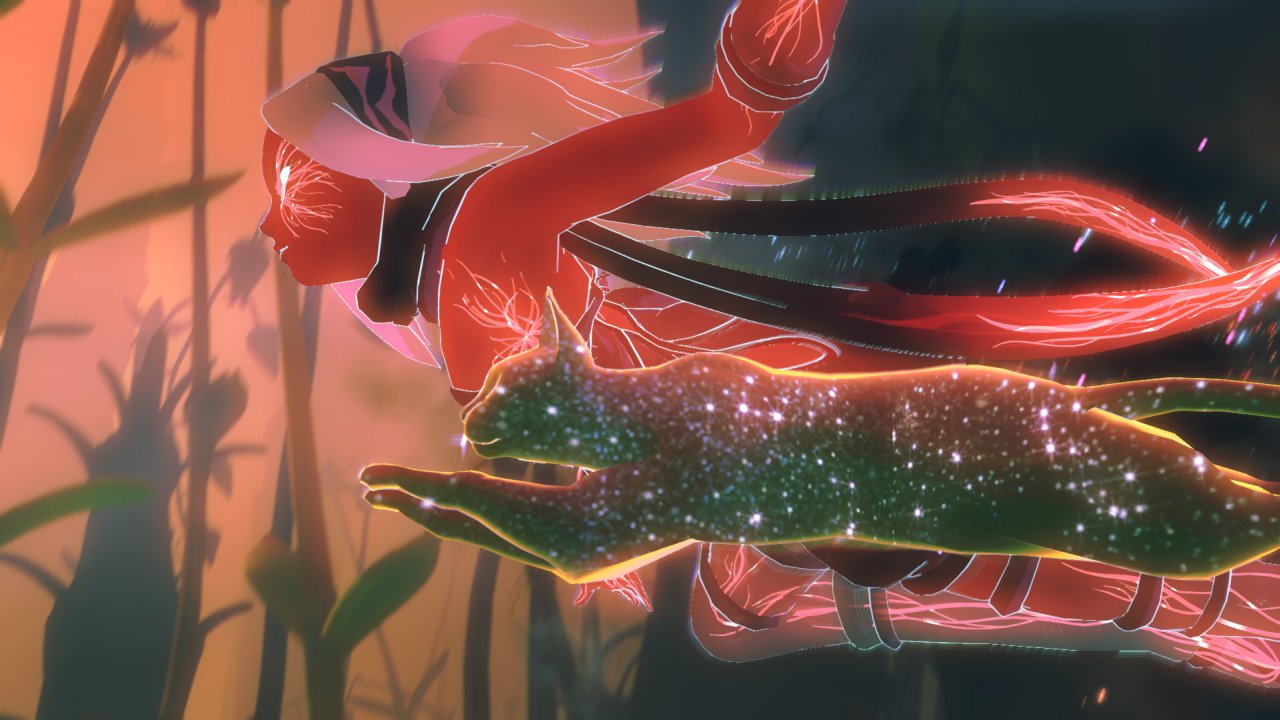
Your combat abilities remain familiar as well. The standard ground melee kick attack is basic but effective, and chaining together combos by landing successive hits is easy; it becomes especially useful when you’re floating and it changes to a Gravity Kick, making Kat into a sort of homing missile on a targeted enemy. This was one of the most useful abilities in the original game, and remains very effective again. But other powers have been buffed to be more useful, and it shows. For example, the Stasis Field which picks up nearby objects and allows you to throw them at enemies, is now a very viable way to inflict damage from a distance. Evasion is a basic dodge ability which isn’t really necessary, and Gravity Slide remains extremely difficult to control on anything other than a flat surface, as Kat drifts across the terrain. The special attack is a devastating move that takes out multiple foes at the same time, but can be used only after building up an attack gauge.
But it’s not simply the exact same powers as the first game. In the sequel, players will actually earn two more, slightly different takes on gravity shifting. Kat is able to swap between the three gravity styles at any time and instantly. The default style you’ll be familiar with from the first game, and then there’s Lunar style and Jupiter style. When in light weight Lunar style, Kat’s normal movements will appear in low-gravity; she will glide across surfaces, and be able to perform very high slower-motion jumps. When you activate gravity shift, your Gravity Kick becomes a series of quick attacks as you warp towards your target, and the Special attack lets you shoot high-damage projectiles at multiple enemies. Similarly but on the opposite spectrum, Jupiter style makes Kat feel much heavier. Your movements and attacks are slower, but do more damage and you’re even able to destroy some parts of the environment. Stasis Field ability, instead of gathering individual items, creates a single blob of debris that you can hurl at foes for great damage; Gravity Kick becomes a charged-up attack that has an area of effect. Swapping between the three styles is not required, but some are more effective against certain foes than others, thus letting players strategize or just stick with whatever they prefer.
You’ll be testing your combat skills against some of the familiar Nevi creatures from the first game – these enemies can only be damaged by attacking their glowing eyes/cores, but that’s what Kat will aim for automatically anyway. A couple of new enemy types will protect their weak points and have armor that needs destroying. For the most part though you’ll be fighting human enemies with conventional weapons, as well as some flying ships and large mechs. The gameplay during action remains enjoyable enough, and the newly added gravity styles help infuse some variety. Boss fights however are a disappointment throughout – these overlong, repetitive encounters are not often challenging nor do they push players to use many of their available skills. You’re simply kicking/throwing things at their weak points, or timing your attacks when they are vulnerable.
The sequel’s main story missions last a bit longer than the original game, but they are very straightforward and rarely produce any exciting gameplay. It all boils down to either flying between locations, fighting a group of enemies, or a mix of the two. It’s definitely the story, characters, and sense of freedom that will keep you playing, rather than mission design. The game also insists on using occasional mission-specific mechanics, but these are rarely worthwhile or fun. The worst culprit are the few forced stealth missions, where being spotted results in checkpoint failure. With little indication of the guards’ vision, some buggy AI, inability to use some/all of your gravity powers, and the occasional timer it makes these missions a pain. It brings the entire experience to a halt and goes against what Gravity Rush 2 is all about. Outside of the main story missions, players will get their choice of optional ones, but they suffer the same fate – shallow design, but with interesting characters. If you’re interested in pure gameplay, there are challenge missions that will actually test your skills based on hitting score/time limits.
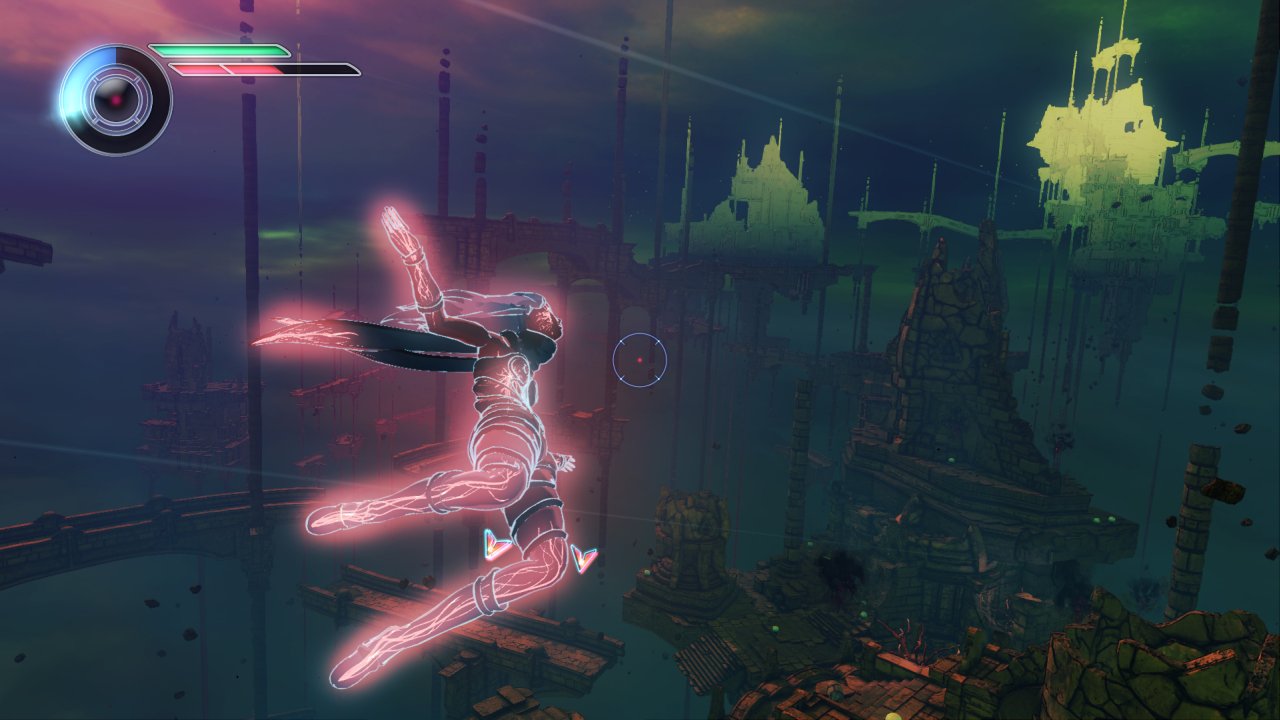
Then there’s the matter of the ending. As mentioned, the original Gravity Rush concluded with a cliffhanger, and didn’t really answer any of the big questions about Kat and her past. The sequel was hoping to remedy that, and it eventually does, but getting through the game’s final chapters is a shockingly dull and poorly designed experience. After facing off against a few boss fights – and partial credits rolling – players are teased that they must play through more story missions to uncover the truth behind the events that set the original game in motion. But to even start this mission chain, you must visit a few specific “conversation markers” on the map first. Up until now, the conversation markers were brief optional conversation with characters and random citizens. It makes no sense why the design suddenly changed, and it sets the precedent for the drudgingly drawn-out final chapters.
Putting even more chapters after what felt like a series of final boss encounters will already make the game feel like it’s dragging and outstaying its welcome, but the absolute killing blow comes from the design of these levels. It almost seems as though they were designed by an entirely separate team that were unaware that they are making the conclusion. The worst parts of Gravity Rush 2 are found here – long and uneventful travel times, combat in tight enclosed areas with terrible camera, repetition of sections, arbitrarily taking away of your powers, and so on. Then the game begins unraveling the plot, which comes in the form of dreadfully long exposition sections that last for what feels like an eternity, where you do nothing but walk and have conversations. For whatever reason, the game chooses to continue introducing new (poorly designed) gameplay mechanics and even new enemies. And of course there are more boss battles, which range in quality from average to poor. When everything is said and done, it is tough to care about the overlong and convoluted explanation of Kat’s origins, and the final chapters manage to nearly sour the entire experience. At the end of it all, we don't even get a simple, happy ending that would have matched the tone of the game and Kat's personality perfectly - but instead it's an "artistically ambiguous" one.
As mentioned earlier, Gravity Rush 2 takes place in a new location called Jirga Para Lhao. The city is available to explore in its entirety from the start, and features a much more diverse design than Hekseville. There are four districts, each with their own theme and feel, from the entertainment district, to the slums, and luxurious mansions. The city is notably large and gives the game a bigger sense of scale; players can still either fly or fast travel via discovered manholes. And yes, you will also eventually return to Hekseville which acts as the second map, and features many changes since Kat was there last time – though you get your home in the sewers back, along with ability to decorate it. Exploring the environment is entertaining, and of course the developers did their best to hide a ton of gems throughout – usually underneath the city and places that promote using your gravity shifting ability. The gems, as in the first game, are used to upgrade your combat abilities via linear improvements. Since the skills are shared between all three gravity styles, upgrading Gravity Kick as a skill improves its effectiveness for all styles at the same time.
Another new activity is ore mining. Players are able to descend into special mining areas, which usually contain a few enemies and perhaps a boss, but they are also covered in ore deposits. Breaking these deposits takes a few hits (one or two if using Jupiter style), and inside you’ll find gems for your skill upgrades. Thus, these mining trips act as dungeons of sorts, used to help level up Kat and practice your combat skills. You’ll also find Talismans when mining – this new addition lets you equip up to three items (one for each gravity style), which offer passive bonuses. Later in the game you are able to combine or break down Talismans with boosts you don’t plan to use. This is a minor addition both in its effectiveness and mechanics. Overall, it isn't particularly necessary to hunt for upgrades or mine since the game is relatively easy on Normal mode, apart from occasional cheap deaths during boss battles. Lastly, there’s also a Photo mode, letting you snap pictures from first or third person perspective. You can change filters, put props into photos, and share them online.
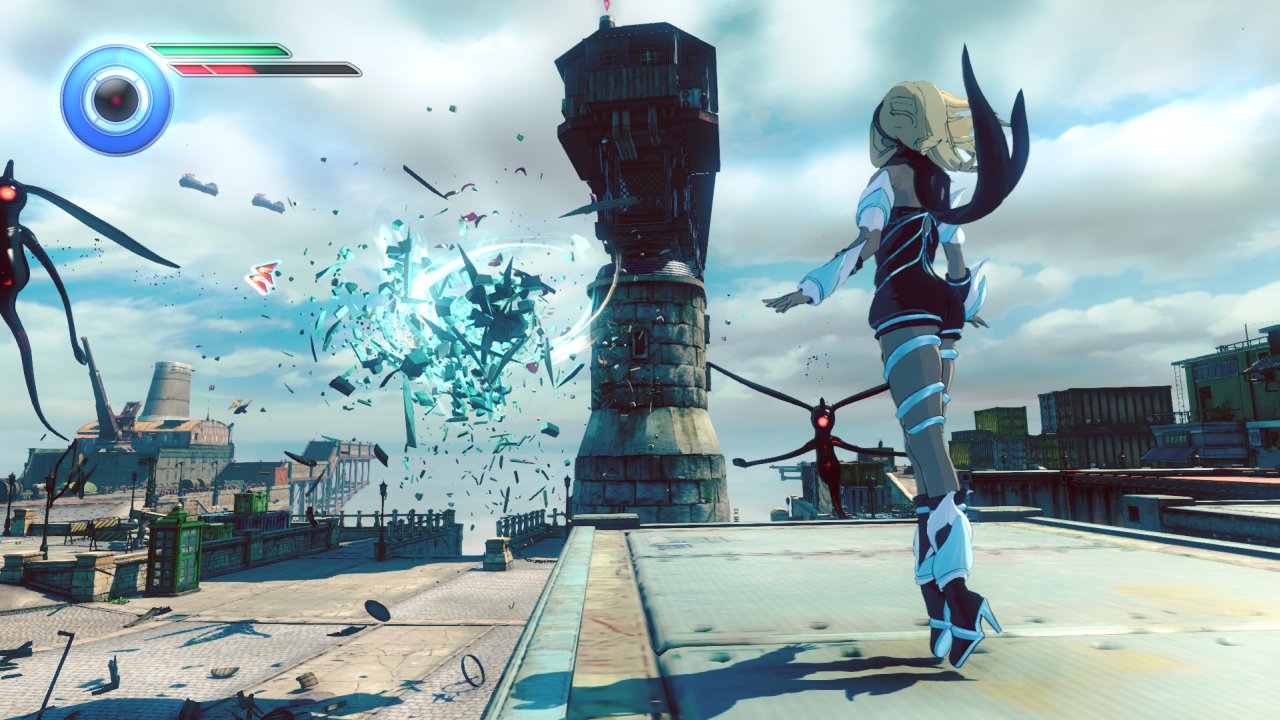
This brings us neatly to the online functions of Gravity Rush 2. There is no actual multiplayer with others, but a few activities do involve other players asynchronously. For example, the photos you take can be shared, and others can rate them positively or neutrally. Getting your photos rated, or rating others, earns you Dusty Tokens, which increase your leaderboard standings. For more involving online activities, there’s Treasure Hunts, which are available for a limited time. Your goal is to look at a photo another player took, and try to find its location in the surrounding area, where a treasure awaits such as more Dusty Tokens, or a new gesture or costume for Kat. In some optional challenge missions, you can compete against ghosts of other players’ previous recorded runs. Lastly, mines can actually act as online dungeons in a sense that the more players that are exploring a particular more, the higher the chances of rare Talismans. Also, if players die in the mines they lose half of their collected gems and you can pick them up at their ghost’s location. These online features certainly help Gravity Rush 2 players feel a bit more interconnected without being invasive to the traditional single player experience.
Gravity Rush 2 looks quite nice on the launch PS4, with its new brighter and more vivid color palette, diverse architecture and nice character design. The art style is rather lovely to look at, and the accompanying soundtrack is also fitting, if a bit repetitive. The game still uses a made-up language for its voice acting, which can be jarring but it does an okay job of conveying character emotions. Other presentation elements also remain the same, with a mix of in-game cutscenes, dialog screens, and wonderfully drawn comic book-like story panels. Like with the Vita original, you can use the DualShock 4 motion sensor to shift the view of these scenes slightly, and it can even be used to adjust your camera view during the gameplay, though that’s thankfully possible to turn off. The controller also emits many of the sound effects during the game, and you use the touchpad swipe to change gravity styles, and press it to execute a finisher move.
The draw distance is impressive when it comes to rendering the large floating city among the clouds, however when it comes to objects – whether it’s NPCs, benches and marketplaces, or even gems – there are big problems. You often need to be quite close to the area for the game to render anything beyond the main island and buildings, so it can be jarring to see an entire town square appear out of thin air as you fly over. More concerning, it makes collecting gems a chore because you can’t really identify them from a distance. While steady for most of the time, the framerate drops significantly during certain moments, such as combat encounters with many special effects, or lots of debris. This is rare enough not to be a major concern, but still disappointing to see on the PS4.
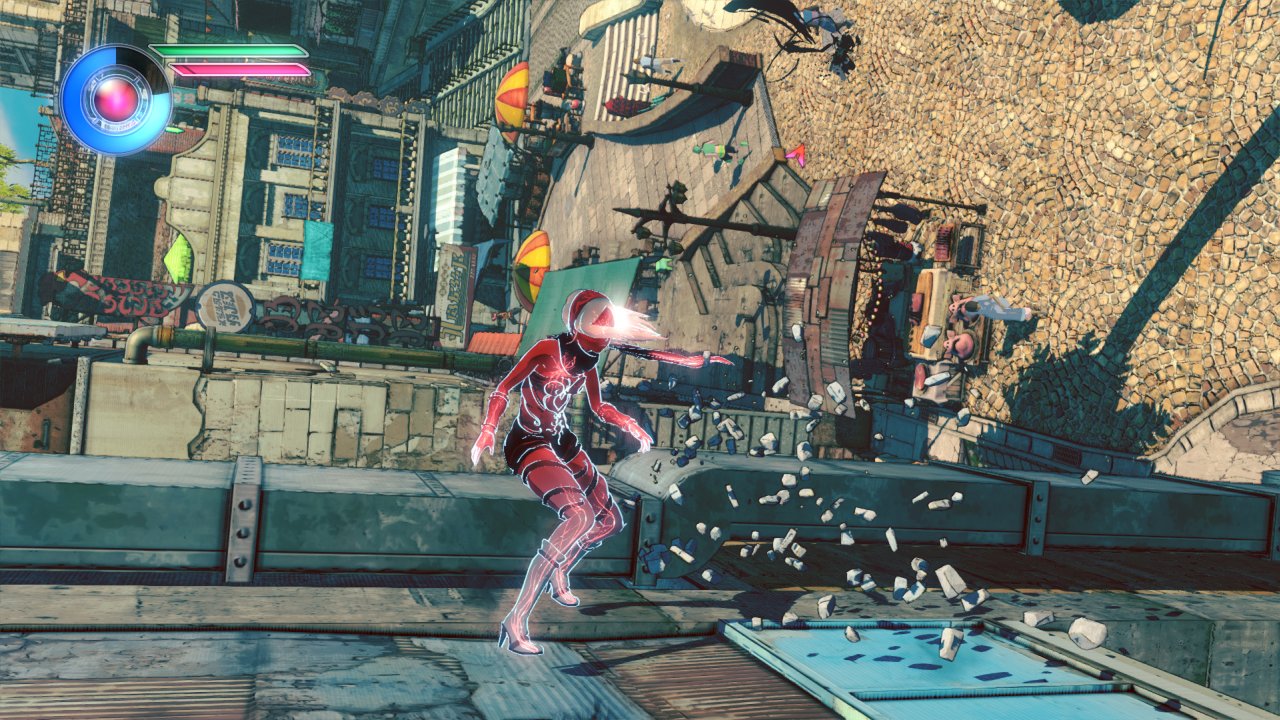
Gravity Rush 2 is a sequel with high hopes on improving on the unique original game, and for the most part, it succeeds. The expanded variety of gravity powers, a new city to explore, and the everlasting sense of freedom help keep this an entirely unique and fun experience. The mission design could have used a bit of work, with more variety and less gimmicky choices. The story is straightforward and is helped by a likeable cast, even as the ending chapter puts a severe dent in your overall impressions. The added online functionality is noninvasive, and the game’s art style looks great on the PS4, though the game still disappointingly suffers from a few technical issues. If you enjoyed the first game, this sequel is worth your time, but it doesn’t fly as high as it could have.
 Comments
Comments




















